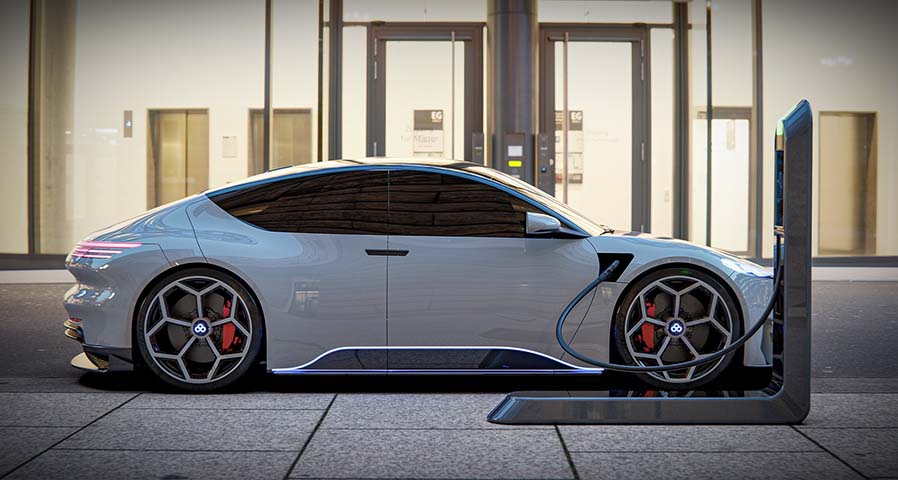Filling a gas tank up is easy. You pull up to the pump, insert the nozzle into your gas tank, and wait a few minutes for it to fill up. The only thing you worry about is the current fuel prices, but it’s a little different charging an electric vehicle. Suddenly the phrase EV charging curve comes into play. What is a charging curve and how does it affect EVs? We cover this and more in our article.
What is an EV Charging Curve?
When you hear EV drivers discussing a charging curve, they are referring to EV charging speeds. Specifically, how charging speeds change the closer your battery is to being fully charged. How long it takes your EV to charge depends on a few factors, but the primary one is your battery.
Depleted or almost empty batteries charge faster than almost full ones.
It’s similar to people filing into a stadium. The first arrivals have plenty of seating options, while the last to arrive find it harder to find a seat. The closer your EV battery is to reaching a full charge, the harder it is for the current to find room.
In this article we are discussing EV charging curves and peaks which pertain to charging speeds but does not offer a full look at what effects EV charging speeds. In our blog, A Look at EV Charging Speeds, we review the three different ways charging speeds are rated.
What are EV Peak Charging Rates?
EV peak charging rates are something every electric driver should know. It affects how long it takes your EV battery to charge.
You may have a DC charger, which is usually faster than AC models, but it doesn’t guarantee a fast-charging speed. You may think the unit is capable of 120kW, it’s standard for many newer DC chargers, but it doesn’t apply to all. The DC charger you are using may only be capable of 50kW, and it noticeably slows down charging speeds.
The peak charging rate is also determined by the EV battery. Using a 150kW charger on an EV battery with only a 5% charge remaining will give you the peak charging rate. Your vehicle will charge faster, but not all the way up to 100%. It’s this increase and decrease that’s referred to as an EV charging curve.
Why EV Charging Curves and Peak Charging Rates Matter
Some EV drivers never have to worry about charging curves and peak charging rates. They have home AC units for overnight charging. When they use public chargers, it’s usually during a meal or a shopping trip. EV drivers can also find public fast DC chargers when they’re on an extended road trip.
Other EV owners need to know charging curves and peak charging rates. For some they may use public charging because their MUD doesn’t offer EV charging yet, or they are in their electric vehicles all day, covering plenty of miles. There are many instances where drivers need to know how long it takes to get their batteries up to 50% or even 80%. They have schedules to keep and can’t afford to spend extra time charging their electric batteries.
The Type of EV Affects Charging Curves and Peak Charging Rates
The type of EV also affects charging curves and peak charging rates. Some EVs, like the Audi e-Tron GT, have a peak charging rate of around 260kW using a fast DC charger. Even then, the charging curve slows down about the time the battery is around 50% full.
Another example is the popular Volkswagen iD.4. It has a fast-charging rate of around 135kW with a DC charger.
Know Your EV Charging Curves and Peak Charging Rates
It’s a simple explanation of EV charging curves and peak charging rates. Technology is constantly advancing, and this means faster charging times for EV drivers. In the meantime, your EV battery charges faster when it’s low and slows down the closer it gets to being fully charged.
To speak with an Apogee Charging Solutions EV charging specialist, call 484-816-2076, email [email protected], or schedule a call that fits your needs by clicking the button below.








0 Comments